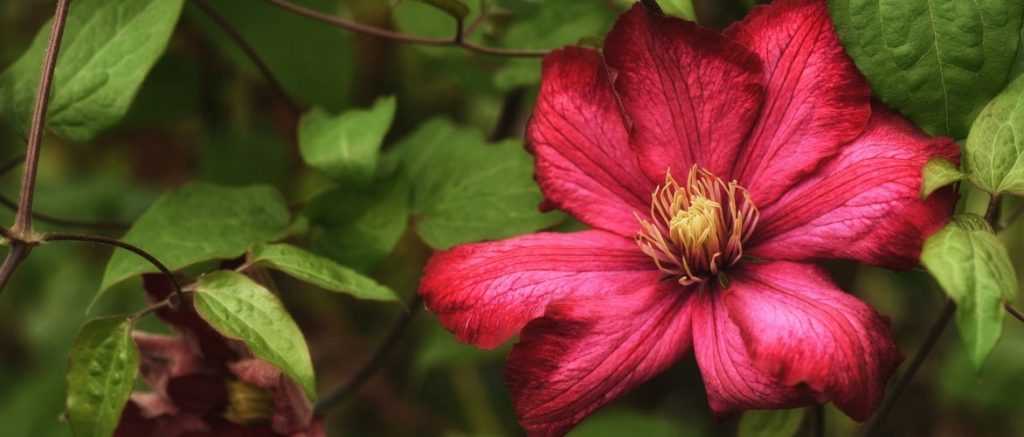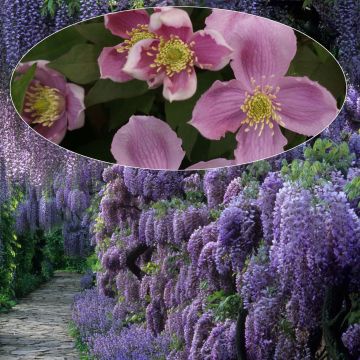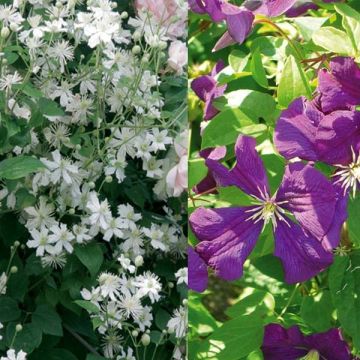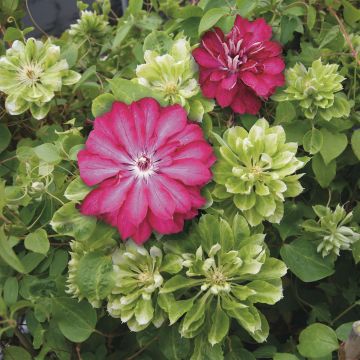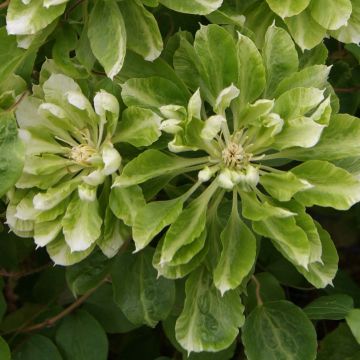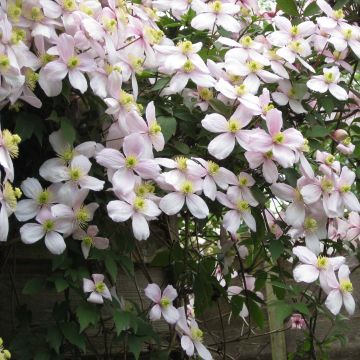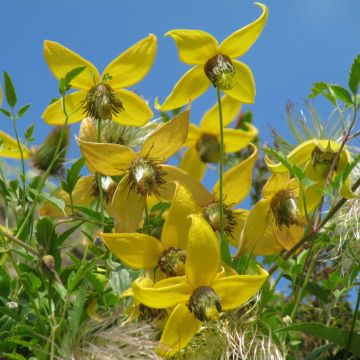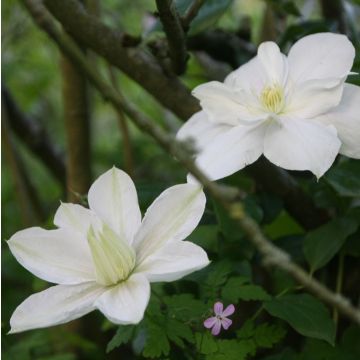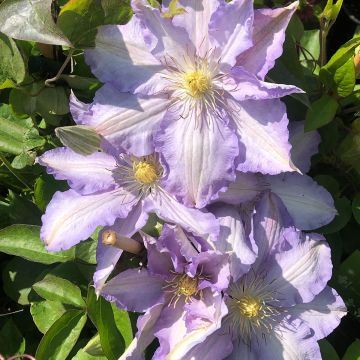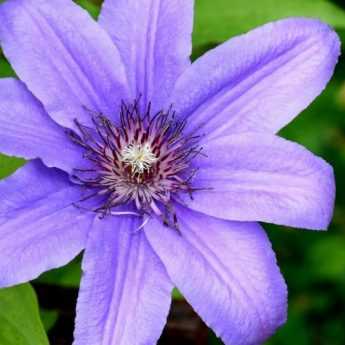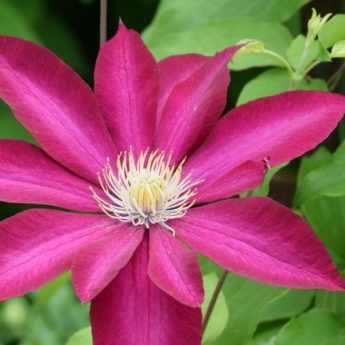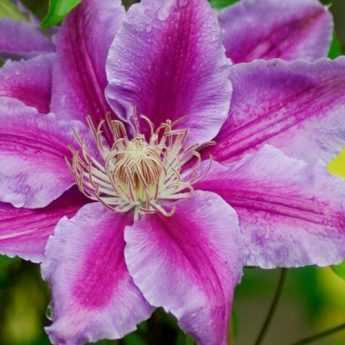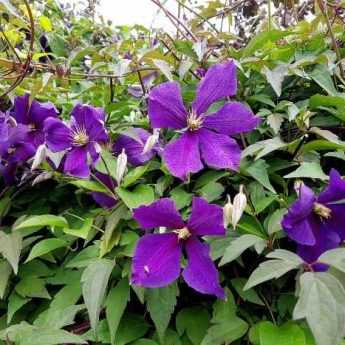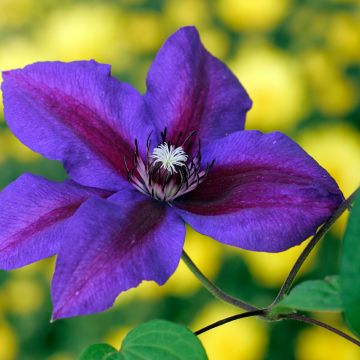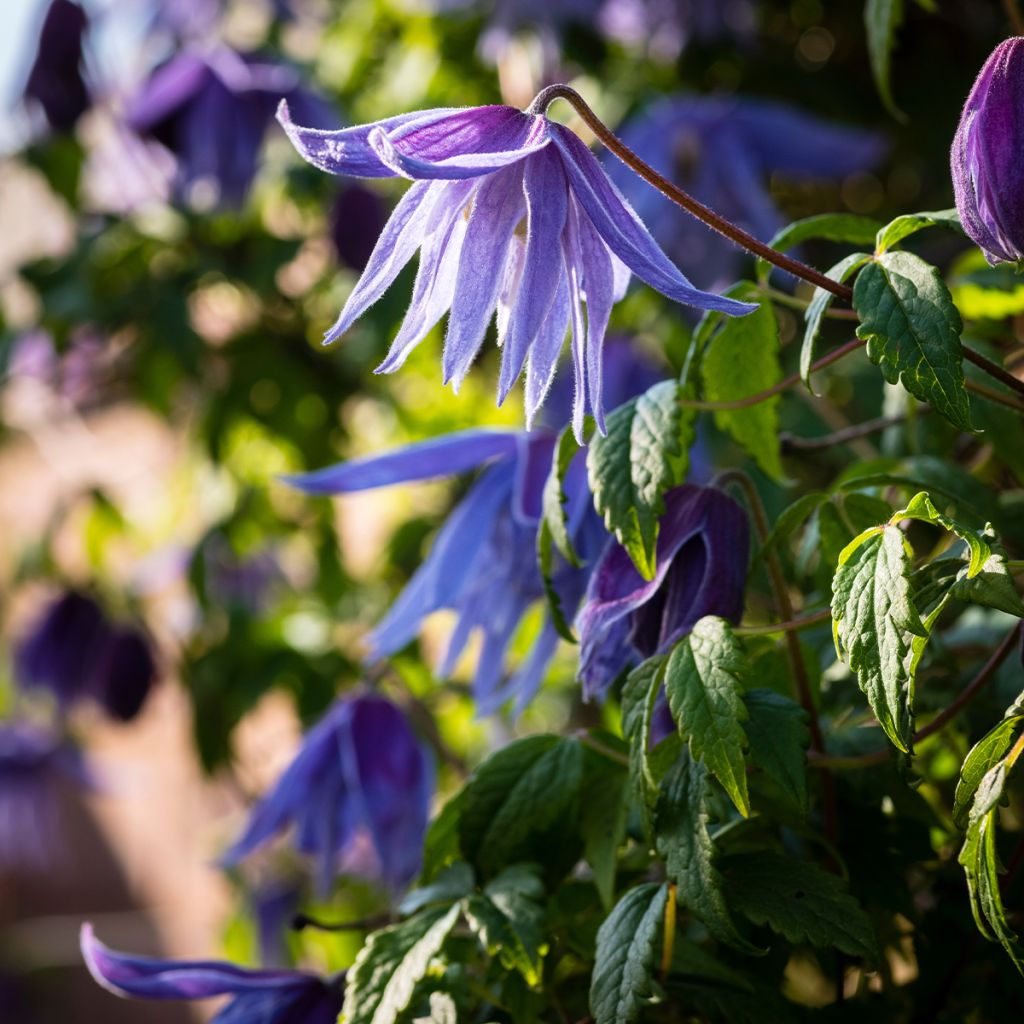

Clematis macropetala
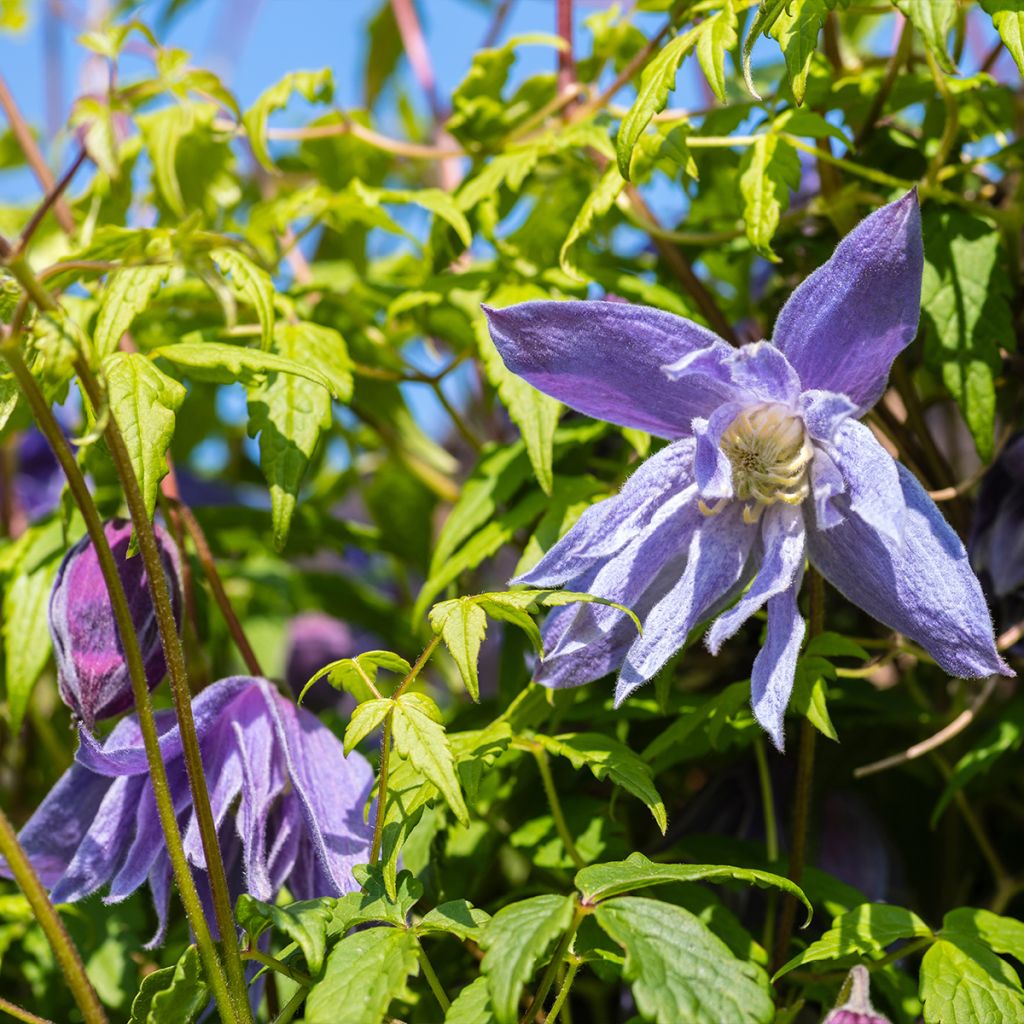

Clematis macropetala
Clematis macropetala
Clematis macropetala
Downy clematis
This item cannot be shipped to the selected country
Oversize package delivery charge from €6.90
Delivery charge from €6.90
More information
Oversize package delivery charge from €6.90
Delivery charge from €6.90
More information
Schedule delivery date,
and select date in basket
This plant carries a 6 months recovery warranty
More information
We guarantee the quality of our plants for a full growing cycle, and will replace at our expense any plant that fails to recover under normal climatic and planting conditions.
Oversize package: home delivery by special carrier from €6.90 per order..
Express home delivery from €8.90.
From €7.90 for pickup delivery and €6.90 for home delivery
Express home delivery from €8.90.
Does this plant fit my garden?
Set up your Plantfit profile →
Description
Clematis macropetala is a botanical species with modest growth. It is more creeping than climbing. It charms with its early, abundant, and delicate flowering. Its bell-shaped flowers are semi-double. They are blue with a hint of purple, and bloom abundantly on attractive foliage from the early days of spring. They give way to feathery and silver fruits that remain decorative for a long time. Beautiful alongside low bushes, this clematis also has a great effect when cascading down a bank or from the top of a retaining wall. It can also be grown in a large pot.
The genus Clematis belongs to the Ranunculaceae family. Similar to Clematis alpina, this species blooms early in spring on the shoots of the previous summer. It is a semi-woody, climbing or creeping perennial plant that can reach a height of up to 3m (10ft), with a spread of approximately 2.5m² (8ft²). Native to northern China, Siberia, and Mongolia, this delicate-looking plant is actually very robust. It is not afraid of late frosts.
From March to May, this clematis bears large flowers, 7 to 10cm (3 to 4in) in diameter, with occasional flowering in summer on new shoots. The bisexual flowers are either solitary or grouped in clusters. They are inclined downwards. They have numerous thin and delicate tepals, gathered in a bell shape, ranging from lavender-mauve to violet-blue. The centre of the flower holds a generous bouquet of cream stamens. The flowering is followed by decorative, plume-like fruits that are greyish-silver in colour. They persist on the plant until winter for those formed in summer. The finely cut leaves are composed of 3 to 5 bright green leaflets that are serrated along the edges. The deciduous foliage dries out in winter. This clematis clings to a support or host plant using petioles transformed into tendrils.
Plant this clematis alongside Japanese quinces, forsythias, magnolias, and flowering apple or cherry trees, which bloom at the same time. These small climbers will enhance all spring-flowering shrubs. Clematis is a diverse genus, with varieties in all colours, shapes, and sizes. Take advantage of their easy cultivation to give your garden a romantic and bohemian touch. The macropetala clematis is easily grown in the garden, and thanks to its relatively modest size, it will also thrive in a pot on a balcony or next to an entrance door to welcome visitors with its early and spectacular flowering. It can also be allowed to run on the ground, where it will form an original flowering carpet in spring.
Clematis macropetala in pictures
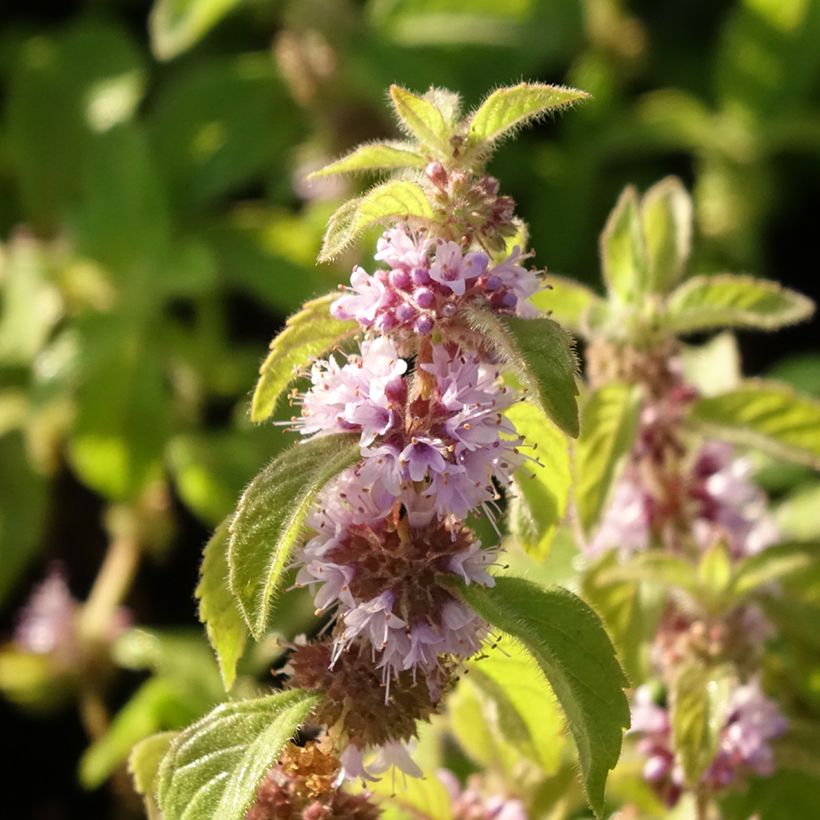

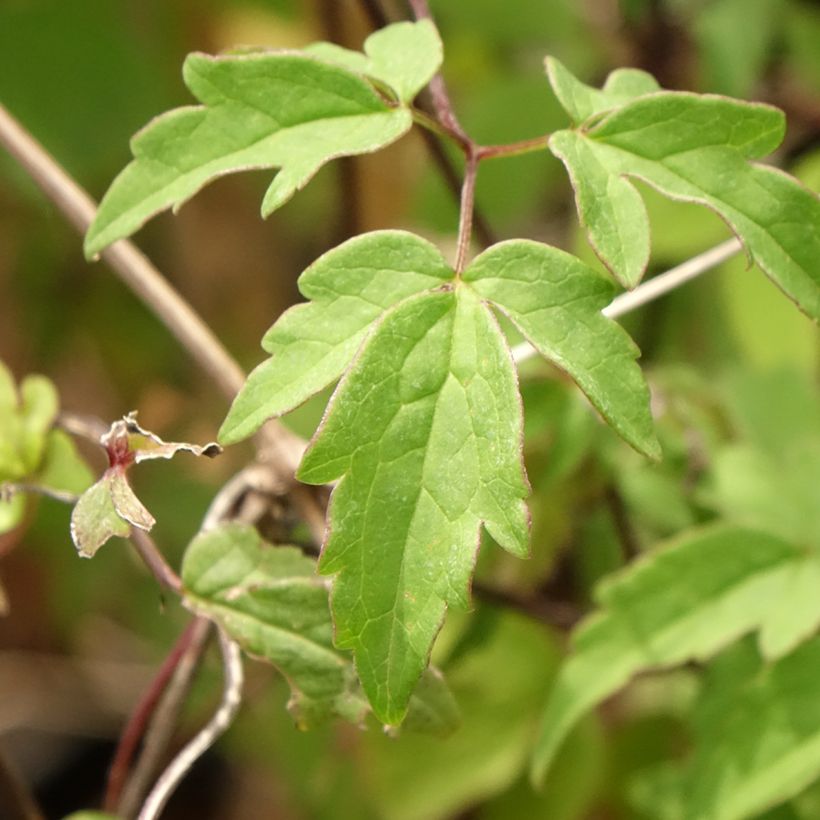

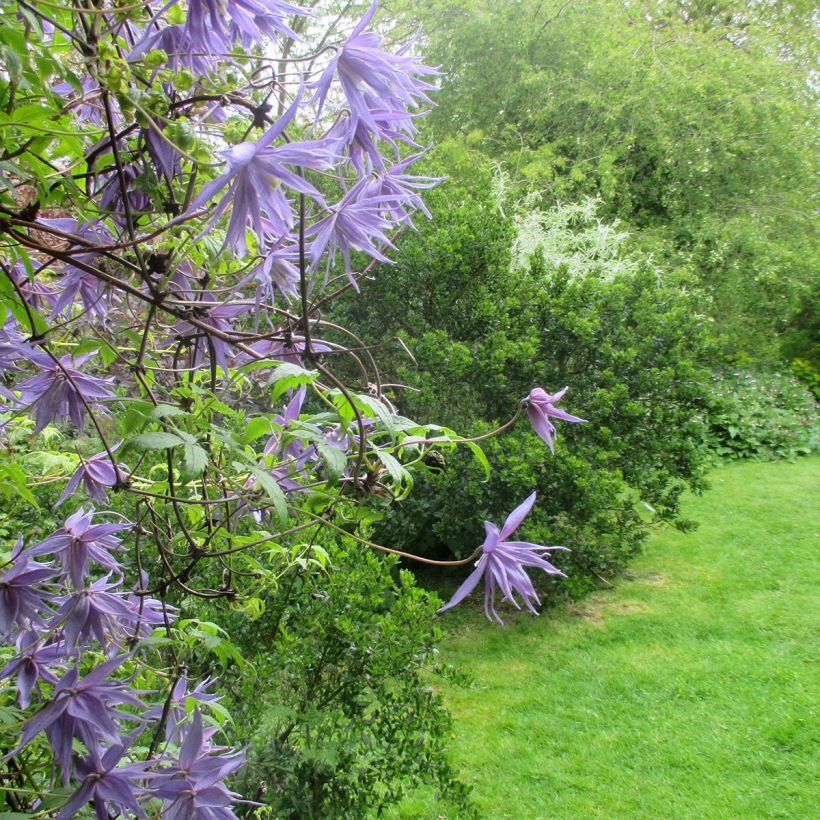

Plant habit
Flowering
Foliage
Botanical data
Clematis
macropetala
Ranunculaceae
Downy clematis
Central Asia
Other Clematis A to Z
View all →Planting and care
Ideally, plant in the sun. It prefers fertile, humus-rich, well-drained soil. Shade the roots and the base of the stem (with a flat tile, for example). Herbaceous species prefer full sun and wilt in overly wet soil.
Work the soil to a depth of 20cm (8in), lightened with good quality compost. Plant it by covering the root ball with 3cm (1in) of soil. After planting, cut back the stems to about 30cm (12in) from the base, above a pair of buds. Water regularly and generously during the first few weeks. Do not overwater, as stagnant water can lead to the development of fungus at the base of the plant. Cover the base of your climbing clematis with a small mound of soil to reduce the risk of withering while encouraging vigorous shoots from the stump.
Mulch in February with garden compost or well-rotted manure, avoiding direct contact with the stems.
Train the stems, without tightening, until the plant can cling on its own. Clematis also enjoy growing freely on neighbouring plants.
This variety flowers in spring on new growth. Prune it in June, after flowering, to 80cm (32in) from the ground (slightly shorter on older subjects), once the plant is well established.
Voles and grey worms can attack clematis and devour the stems. Aphids and greenhouse whiteflies are also potential parasites.
Planting period
Intended location
Care
Planting & care advice
-
, onOrder confirmed
Reply from on Promesse de fleurs
Clematis
Haven't found what you were looking for?
Hardiness is the lowest winter temperature a plant can endure without suffering serious damage or even dying. However, hardiness is affected by location (a sheltered area, such as a patio), protection (winter cover) and soil type (hardiness is improved by well-drained soil).

Photo Sharing Terms & Conditions
In order to encourage gardeners to interact and share their experiences, Promesse de fleurs offers various media enabling content to be uploaded onto its Site - in particular via the ‘Photo sharing’ module.
The User agrees to refrain from:
- Posting any content that is illegal, prejudicial, insulting, racist, inciteful to hatred, revisionist, contrary to public decency, that infringes on privacy or on the privacy rights of third parties, in particular the publicity rights of persons and goods, intellectual property rights, or the right to privacy.
- Submitting content on behalf of a third party;
- Impersonate the identity of a third party and/or publish any personal information about a third party;
In general, the User undertakes to refrain from any unethical behaviour.
All Content (in particular text, comments, files, images, photos, videos, creative works, etc.), which may be subject to property or intellectual property rights, image or other private rights, shall remain the property of the User, subject to the limited rights granted by the terms of the licence granted by Promesse de fleurs as stated below. Users are at liberty to publish or not to publish such Content on the Site, notably via the ‘Photo Sharing’ facility, and accept that this Content shall be made public and freely accessible, notably on the Internet.
Users further acknowledge, undertake to have ,and guarantee that they hold all necessary rights and permissions to publish such material on the Site, in particular with regard to the legislation in force pertaining to any privacy, property, intellectual property, image, or contractual rights, or rights of any other nature. By publishing such Content on the Site, Users acknowledge accepting full liability as publishers of the Content within the meaning of the law, and grant Promesse de fleurs, free of charge, an inclusive, worldwide licence for the said Content for the entire duration of its publication, including all reproduction, representation, up/downloading, displaying, performing, transmission, and storage rights.
Users also grant permission for their name to be linked to the Content and accept that this link may not always be made available.
By engaging in posting material, Users consent to their Content becoming automatically accessible on the Internet, in particular on other sites and/or blogs and/or web pages of the Promesse de fleurs site, including in particular social pages and the Promesse de fleurs catalogue.
Users may secure the removal of entrusted content free of charge by issuing a simple request via our contact form.

































